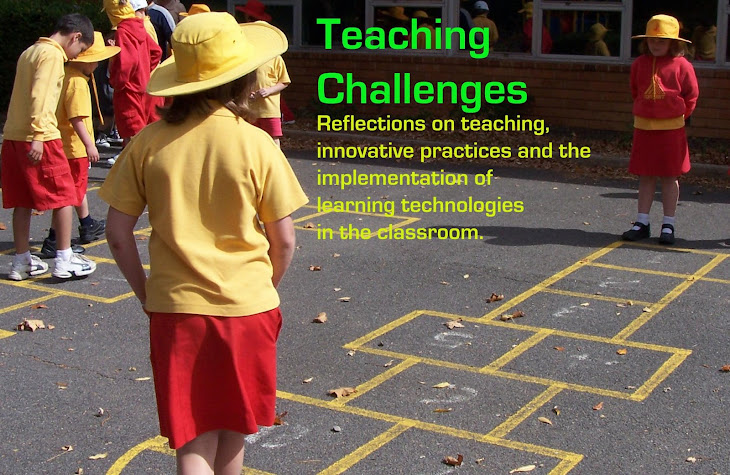The activities in these weeks were designed to provide opportunities for students to find out about space and sort their ideas in a range of forms. Students typically "found out" through books, videos, websites, songs and experiments. They "sorted out" using writing, diagrams, reports and art.
Science
One of the focus questions for this unit is: "What are the relationships between distance and apparent size of objects to an observer?" My first thought was, "Huh?" closely followed by "Hmmmm." The models we made in weeks 2 and 3 touched on this but didn't really EXPLAIN anything or help students to make these deductions. I found an explanation of Emmert's Law on Wikipedia, but it was still too confusing for Year 4 students to really grasp. Somewhere along the way I thought about the funny photos you can take that play with this concept. Like this one by Andy Hay:

http://www.flickr.com/photos/andyhay/ / CC BY 2.0
I found a bunch of these at 100+ Funny Photos Taken At Unusual Angles and pulled out some appropriate ones to use with my class. (WARNING: Some are inappropriate, so do not use this site uncensored with your students.)
We looked at these at the start of the lesson and discussed the concept about apparent size and distance. I compared this to the apparent sizes of the sun and moon from Earth. I then gave students two different sized balls which they took outside and had to space apart in such a way that they looked the same size when viewed through the camera. Students then glued these pictures into their books and wrote an explanation of what they did and what they learnt. Those who finished early had time to create their own funny photos using their creativity.

Integrating with Literacy
Writing an Information Report
We needed to assess students' writing in preparation for end of year progress reports, so we decided to have students research and write about the sun. Information was provided through:
- a double-page spread from a book about space (including a diagram)
- this NASA diagram of the sun
- this Space School video on the sun
- and the following 'music video'
Students took notes while we explored these together. We watched the videos twice each and I demonstrated how I would take notes and add to them during the second viewing. Students then had the rest of the session to begin sorting through their notes to determine which ideas could be grouped together and to consider paragraph headings.
In the following session students began writing their report and drawing a diagram. In our next session students will review their work. You can see a copy of the Assessment Booklet below:
An Information Report About The Sun
View more documents from pennyryder.
Integrating with Art
Nebula Watercolour Paintings
Having just explored the lifecycle of a star together, I showed students some photographic images of nebulas and super novas. We discussed the range of colours and the shapes and lines that were used. We then looked at these watercolour paintings by Ken Bandaruk. I gave students a large sheet of paper and some watercolours and left them to their own creativity to make nebula watercolours of their own. Once the painting was complete, students used a bamboo skewer and some white paint to add a layer of stars. Students who finished early went on to create super nova paintings using crayons and watercolours.

One Point Perspective
Building further on the concept from Emmert's Law, I taught students how to draw with one point perspective using these step-by-step instructions. Now that students have the basics, they are going to take it further, creating scenes of their own.
If you enjoyed this post, why not check out previous posts in the Space Spectacular Series.








No comments:
Post a Comment
I'd love to hear your thoughts and questions. Please don't be shy...
:)